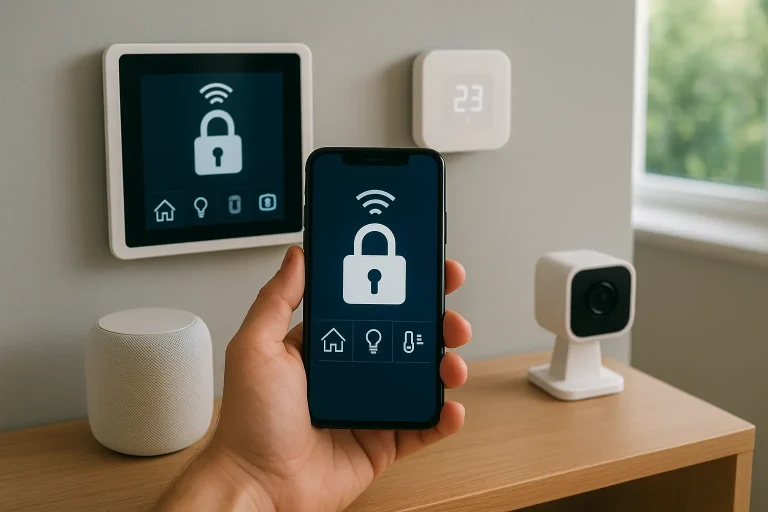Exploring Emerging IoT Security Standards: Safeguarding the Connected Future
Emerging IoT security standards are rapidly gaining traction as the Internet of Things (IoT) ecosystem continues to expand at an unprecedented pace. As billions of interconnected devices become integral in homes, industries, and cities, ensuring their security is no longer optional but imperative. These standards provide frameworks and guidelines designed to protect IoT systems from vulnerabilities, data breaches, and malicious attacks. In this article, we delve into the significance of emerging IoT security standards, their current landscape, and what the future holds for securing the connected world.
Why Emerging IoT Security Standards Matter
The proliferation of IoT devices—from smart thermostats and wearable health trackers to industrial sensors and autonomous vehicles—has transformed the way people live and businesses operate. However, the increase in connected devices exponentially broadens the attack surface for cybercriminals. Many early IoT devices were developed with limited focus on security, often lacking basic protections such as encryption and authentication.
Emerging IoT security standards address these vulnerabilities by setting uniform requirements and best practices for manufacturers, developers, and users. These standards help ensure devices are resilient against cyber threats, safeguard user privacy, and maintain system integrity in the face of evolving risks. Without such standards, the IoT industry risks facing widespread security failures that could disrupt services, compromise sensitive data, and threaten public safety.
Key Components of Emerging IoT Security Standards
Emerging IoT security standards typically cover several critical domains to establish robust protection throughout the device lifecycle:
1. Device Identity and Authentication
Ensuring each device can be uniquely identified and securely authenticated is fundamental. Standards mandate the use of cryptographic keys and certificates to verify devices before they join a network, preventing unauthorized access.
2. Data Encryption and Privacy
Encrypting data both at rest and in transit protects sensitive information from interception or tampering. Privacy requirements also focus on minimizing data collection and ensuring compliance with regulations such as GDPR.
3. Secure Firmware and Software Updates
IoT devices must be capable of receiving and installing firmware or software updates securely to patch vulnerabilities and improve functionality over time. Secure update mechanisms protect against malicious alterations.
4. Network Security
Standards promote network segmentation, intrusion detection, and secure communication protocols to reduce the risk of widespread breaches within IoT ecosystems.
5. Device Lifecycle Management
From manufacturing to decommissioning, standards emphasize proper inventory management, secure onboarding, and safe disposal to avoid leftover vulnerabilities.
Leading Initiatives in Emerging IoT Security Standards
Several organizations and consortia are actively developing and promoting IoT security standards globally to harmonize efforts and foster industry-wide adoption.
The Internet Engineering Task Force (IETF)
The IETF has introduced several drafts and RFCs focused on securing IoT communication protocols such as CoAP (Constrained Application Protocol) and DTLS (Datagram Transport Layer Security). These protocols are tailored to the resource constraints typical of many IoT devices.
The Industrial Internet Consortium (IIC)
Targeting industrial IoT, the IIC framework outlines best practices combining cybersecurity with operational technology. Their Industrial Internet Security Framework (IISF) provides guidance on threat management and risk assessment.
The Open Connectivity Foundation (OCF)
OCF’s security standards focus on device interoperability and end-to-end security, including standardized onboarding and access control mechanisms. Their work ensures devices from different manufacturers can securely communicate.
The National Institute of Standards and Technology (NIST)
In the U.S., NIST has published comprehensive guidelines such as the NISTIR 8228, which addresses IoT cybersecurity risks within enterprise environments. Their frameworks support risk management tailored to IoT’s unique characteristics.
ETSI EN 303 645
The European Telecommunications Standards Institute (ETSI) introduced this landmark standard which outlines baseline security requirements for consumer IoT devices, emphasizing measures like secure boot, vulnerability reporting, and data protection.
Challenges in Implementing IoT Security Standards
Despite the development of emerging IoT security standards, widespread implementation faces notable hurdles:
- Fragmentation: Diverse standards frameworks can confuse manufacturers and developers, leading to inconsistent adoption.
- Resource Constraints: Many IoT devices have limited processing power and battery life, making it difficult to implement complex security features without impacting performance.
- Cost Considerations: Adding security measures can increase production costs, which may discourage manufacturers, especially in highly price-competitive markets.
- Rapid Innovation: The fast pace of IoT technology evolution sometimes outstrips the pace of standards development, requiring continuous updates to guidelines.
The Path Forward for IoT Security
To overcome these challenges, collaboration between industry stakeholders, governments, and standards organizations is crucial. Encouraging certification programs and security labels can boost consumer confidence and drive market demand for secure devices. Furthermore, integrating security early in the device design process—often called “security by design”—will become the norm rather than the exception.
Emerging IoT security standards will evolve to address new threats like AI-driven attacks and quantum computing. Incorporating technologies such as hardware-based root of trust and advanced anomaly detection will further strengthen defenses.
Conclusion
As the world becomes ever more connected, emerging IoT security standards serve as the foundational pillars that will protect users, enterprises, and critical infrastructures from mounting cyber risks. By understanding these standards’ key components and supporting their adoption, the industry can build a safer and more resilient IoT ecosystem that empowers innovation without compromising security. The future of IoT depends not only on the speed of technology development but on the effectiveness of security standards shaping that growth.




